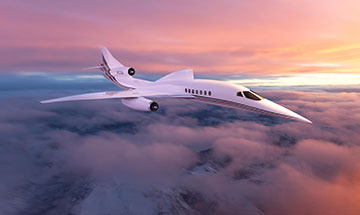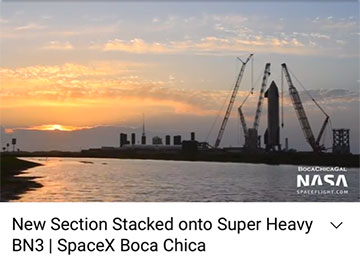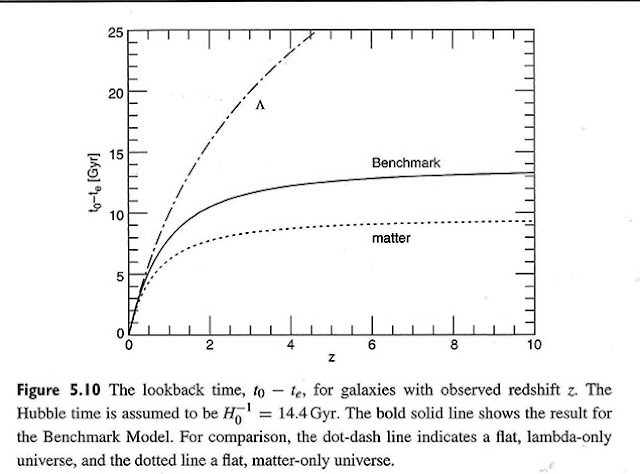Greetings from Palmia Observatory
Well after successfully viewing the total lunar eclipse it is now back to online study groups.
First up was a great UCI astrophysics colloquium on "supermassive black holes and how they form" by Stephanie Juneau, NOIRlab. NOIRlab stands for National Optical-Infrared Astronomy Research Laboratory, which is headquartered in Tucson, AZ, but uses observatories around the world.
The colloquium was very technical and data laden, but my one big picture takeaway is this screenshot showing the formation history of black holes in galaxies. Notice how the formation of black holes is found to peak at around redshift 2, which corresponds to a lookback time of about 10 billion years (more about lookback time later in this post). This big picture view tells us a lot about the nature of cosmology and how we got to be where we are today. I don't recall hearing much about how supermassive black holes became so massive, maybe I just missed it, but, anyway thanks for the presentation, Stephanie!
 |
| Black Hole Formation History (Source: Stephanie Juneau, NOIRlab, at UCI colloquium) |
In a separate discussion with other physicist wannabes, I mentioned a photo of the recently successful landing of Starship SN15, which showed the three Raptor engines, and I pondered if you had to be an engineer to consider this as "beautiful?" I mean just look at how all of these engine parts, all necessary for the proper operation of the engine, are placed and in just about very smallest part of the available volume!
 |
| Starship SN15 engines after successful test hop and landing (Source: @Leland_Palmer77) |
Well, Gravity Guy, Ken, responded with some other examples of beautiful engines and prototype aircraft. This engine was being developed for use in a new supersonic aircraft. Beautiful, yes?
 |
| Affinity Supersonic Engine (Source GE) |
Sadly, the development of this engine has now stopped because the development of the supersonic aircraft, being developed by Aerion Corporation, has been cancelled. The aircraft would fly at Mach 1.4, but for lack of more needed capital to keep the development going, the project was cancelled on May 21. Sad, but wow, it sure looks beautiful! Thanks for keeping us up to date, Ken!
 |
| Aerion AS2 Supersonic Jet Aircraft (Source: Aerion Corp.) |
We have other beautiful things to keep us energized. This time we see a beautiful rainbow over Boca Chica SpaceX launch area. I guess this means there is a pot of gold in the space business. Thanks for that Mary!
 |
| Beautiful rainbow over Boca Chica (@BocaChicaGal, Mary) |
And even without a rainbow, sunrises and sunsets at Boca Chica with Starship SN15 in the foreground, are beautiful. Gotta get back down there!
 |
| Beautiful view of the SpaceX Boca Chica launch site (Source: NASAspaceflight.com) |
Well, even if we are not currently in Boca Chica, we can still appreciate this 3-D printed model of the Starship. This version was shown on Etsy and was made available by Nikola Darrosa, of 3DbyHeroo in Luxumbourg. The aerodynamic flaps even move back and forth and it includes 3 Raptor engines at the base. Thanks for that beautiful model, Nikola!
 |
| Resident Astronomer appreciates 3-D Starship model (Source: Palmia Observatory) |
One more beautiful picture is of a model of the engines in the SpaceX Heavy Booster, which will be used for orbital flights of the Starship. This booster has many more engines in order to lift the Starship, which is to be mounted on top, high enough that the Starship itself can finish the entry into orbit. Thanks to Felix, @What About It, for providing the sketch created by Stanley Creative! The fuel manifold bringing fuel and oxidizer to all 31 engines is a monstrous beauty.
 |
| Engineering sketch of SpaceX Super Heavy Booster with 31 Raptor Engines (Source: WAI) |
While we have considered beautiful spacecraft and structures, we should not forget about beautiful theories, like general relativity, and also about some of the other equations of cosmology. For now, let's return to the idea of "lookback" time and how we use beautiful equations to calculate how long ago some structure in the universe formed by making measurements of redshift. I first got an introduction to these equations after picking up a copy of "Introduction to Cosmology" by Barbara Ryden. It turned out I saw the 2nd edition of the text at the AAS meeting in Grapevine, TX in 2017 and Barbara signed it for me.
 |
| Getting signed copy of Professor Ryden's textbook (Source: Palmia Observatory) |
The equations use measured values of redshift and galaxy models, which use the estimated values of normal matter, dark matter, radiation and dark energy, to calculate the lookback time. In this chart you can see that for the standard benchmark model, by the time you measure objects at redshift 10, or so, you are already looking back into the past some 13 billion years ago. Remember that the cosmic background radiation is thought to originate at around redshift of 1100, which corresponds to about 280,000 years after the big bang. Pretty neat! You can also see that as better and better measurements of the amount of the matter and energy content of the universe get better, the lookback time will also get adjusted.
 |
| Lookback time as function of redshift and galaxy model (Source: B. Ryden, "Introduction to Cosmology") |
This last example from the textbook describes how the observation of redshift correlates with proper distance of the emitting object as seen now and how it would have been seen in previous time nearer to the time of emission. The left panel is pretty straightforward in showing that the proper distance to the object is a non-linear function of redshift. By the time you get out to redshift, say greater than 10, you very close to the further most distance. The panel on the right shows the proper distance if you were an observer seeing a different redshift to the same object. The vertical scale is in terms of the Hubble distance, which is represented by c / H0.
The panel on the right shows a somewhat more paradoxical view of redshift from the standpoint of emission, not observation. Notice how the distance is a minimum at z = 0.01 and also at z > 100 for the Benchmark model. What does this mean? My interpretation of this is that if you happened, in your imagination, to be standing at the location where a photon was emitted that now appears on Earth as a z = 100 photon, your imaginary friend would be very close to the emission source. Likewise if your imaginary friend were at the location where the z = 0.01 photon was emitted, the friend would also be very close to the emission source. So, it seems that around redshift, z = 1, is when the acceleration of the universe really starts to take off. Hmm, does all of this seem the correct interpretation to you?
 |
| Lookback time as function of redshift and galaxy model (Source: B. Ryden, "Introduction to Cosmology") |
So, we have seen some beautiful pictures and equations, but it might not be the case that beautiful equations will continue leading to progress in physics. If you follow the likes of Sabine Hossenfelder, who I do, you get a sense of how the concept of beauty in physics was responsible for the fantastic development of the Standard Model in particle physics, but that maybe now, over 50 years latter, has not lead to big insights. Is it the case that the search for beauty in the equations has resulted in some fantastic mathematics, but has not resulted in any new measurements in support of those ideas? Surely, we have not come this far in the history of science to now have to give up on the experimental verification of new theories?
 |
| Lost in Math - How Beauty leads physics astray (Source: Sabine Hossenfelder) |
Whew, ok, that is enough on beauty and equations and space, let's finish up with with a wry comment on Schrodinger and his famous superposition discussion.
 |
| Our world is made up of quantum superpositions (Source: unknown Facebook post) |
Until next time, here from our burrow, stay safe, as we recover more of our freedom,

No comments:
Post a Comment